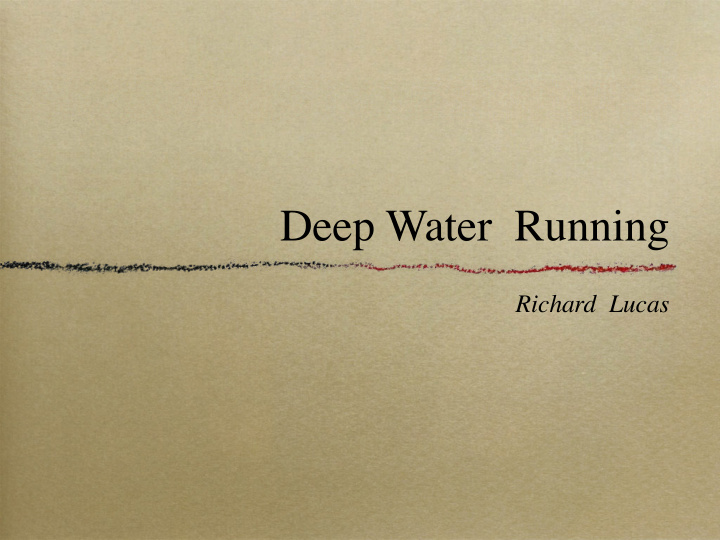



Deep Water Running Richard Lucas
What is it? Mimicking running action while in the water Suspended in the water (not touching the bottom)
Comparison to Land Running No impact Same techniques Same workouts (avg 30st/100m) Greater strength demands No recovery in flight phase Greater variation in stride frequency Constant environment
Some Benefits Fewer injuries (non-damaging cramps) Greater VO 2 demands Builds strength-endurance and strength-speed Less recovery between intervals Magnifies running pattern abnormalities
Dangers High stress on torso during intense workouts (stress fracture) Overheating
Techniques Basic Advanced Middle Distance Max Speed High Knees Heel Lift
Movement Pattern Assessment Foot placement Ankle position Knee flexion Hip position Hip/Upper leg angle (both ends of range of motion) Mid-line displacement
Running Stride Comparison Slower for styles with significant strength or endurance component Faster for styles with significant speed component Longer and shorter stride length than possible on land Proper style is easier to measure (using the water line as a guide
Breathing Increased water pressure can cause some athletes to shallow breathe leading to reduced ability to complete workouts
Workouts Continuous workouts (3+ hours) Intervals (use double strides as the control variable) technique
My reference Lucas, Richard, 1994, Deep Water Running: Tips and Techniques, Sports Coach , 17:1, 13-18.
Recommend
More recommend